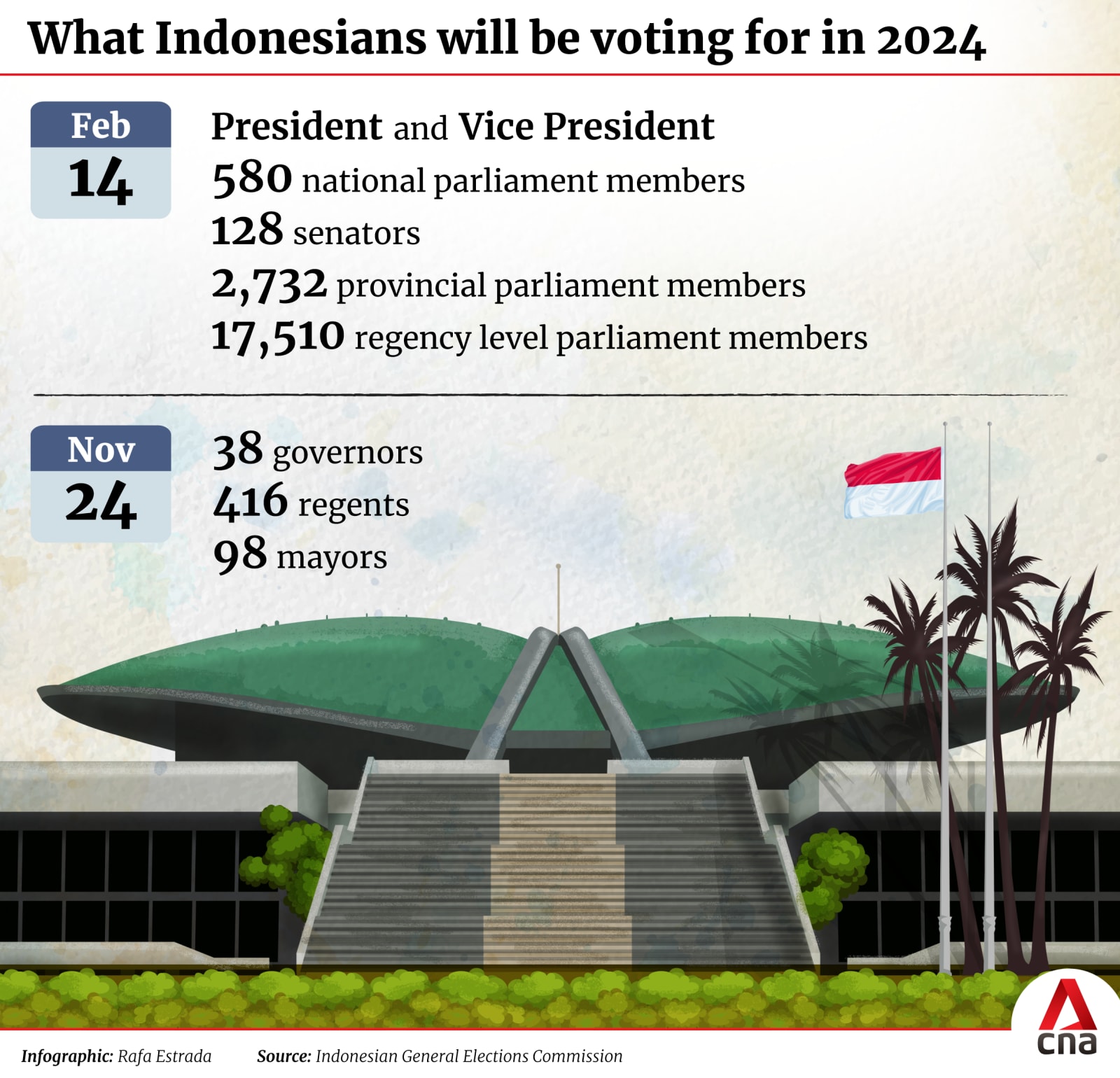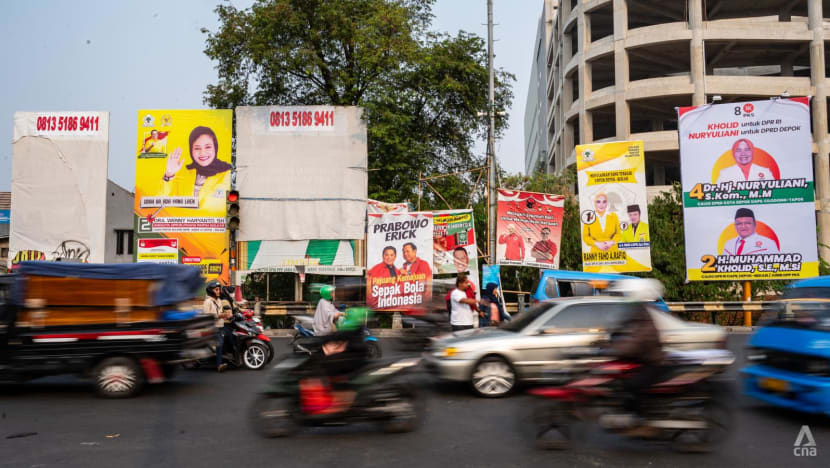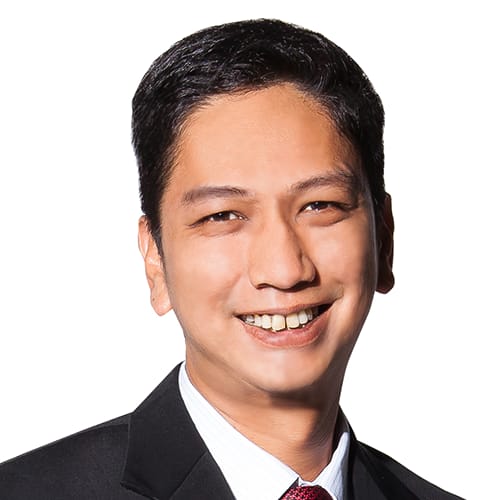Indonesia kicks off election season today to pick new president, legislators next February - here's what to expect

Shops selling custom merchandise like this one in Jakarta, Indonesia have been inundated with orders for politically themed t-shirts, hats and scarves as Indonesia prepares to stage presidential and legislative elections on Feb 14. (Photo: CNA/Wisnu Agung Prasetyo)
- More than 204 million voters in Indonesia will cast the votes next year to decide the country’s next president, members of parliaments, governors, regents and mayors
- Hundreds of thousands of candidates from 18 political parties are expected to vie for more than 20,000 positions at the national and regional legislative bodies
JAKARTA: Indonesia officially enters election mode on Thursday (Oct 19), with registration open for candidates keen to contest the upcoming presidential polls next February.
More than 204 million Indonesians will hit the ballot booths on Feb 14, 2024 as the world’s third-biggest democracy is set to also decide on members of its national, regional and city-level parliaments.
In total, more than 20,000 positions are up for grabs, which is why pundits and media outlets are calling it the world’s biggest single-day elections.
The country will also stage simultaneous elections on Nov 27, 2024 to elect 38 governors, 416 regents and 98 mayors across the country, the first time they are being held in the same year as national elections.
The outcome of these elections will determine who gets to lead Southeast Asia’s biggest economy and whether the next leader will continue or instead undo the legacy left behind by the current president Joko Widodo, such as his foreign policies, as well as his social and infrastructure programmes.
The president, popularly known as Jokowi, is barred from running for a third term by the Indonesian Constitution.
Analysts are predicting that 2024 will be an intense year for Indonesia’s political landscape, with tensions and instability potentially spilling into the following year.
“The advantage (of simultaneous elections) is all the political tensions associated with elections are contained within the same year allowing for more political stability in the four years that followed,” Mdm Titi Anggraini, an expert on election law from University of Indonesia, told CNA.
“The downside is: this creates a substantial amount of complexities and challenges in the election process itself, potentially overwhelming not only election organisers but also the voters.”

Staging elections simultaneously means Indonesia’s General Elections Commission (KPU) will have to work hard to tackle the massive logistical challenge of setting up polling stations and delivering ballot papers to more than 204 million voters living in the country’s 17,000 islands as well as the 1.7 million Indonesians living abroad.
Meanwhile, the Election Supervisory Body (Bawaslu) has to make sure thousands of candidates from 18 national and five local political parties toe the line throughout the election process and investigate any allegation of campaign violation and election fraud.

Judges at Indonesia’s Constitutional Court will also have to brace themselves to settle all disputes which may arise from the presidential, legislative and regional elections.
The simultaneous elections are expected to cost the country 76 trillion rupiah (US$4.8 billion).
Here is what you need to know about Indonesia’s simultaneous general elections.
PRESIDENTIAL ELECTION
All eyes – both domestically and internationally – are bound to be fixed on the country’s presidential election, analysts predicted.
Three hopefuls have so far been touted as possible candidates for the presidential election: current Defence Minister Prabowo Subianto, former Jakarta governor Anies Baswedan and former Central Java governor Ganjar Pranowo.
Of the three, only Mr Baswedan has officially announced his running mate: Mr Muhaimin Iskandar, chairman of the National Awakening Party (PKB).
The other two need to appoint their vice presidential picks soon. The registration period opens on Oct 19 and ends on Oct 25.
The election body, KPU will then vet the hopefuls to see if they meet all the administrative requirements to participate in the presidential elections before announcing the final list of candidates on Nov 3.
By law, each presidential and vice presidential pair must be supported by a coalition of parties which have at least 20 per cent of combined representation at the national parliament or 25 per cent of the popular vote during the last election in 2019.
All three hopefuls are in the clear as Mr Subianto, Mr Baswedan and Mr Pranowo have 45 per cent, 29 per cent and 25 per cent of parliamentary support respectively.

The law also states that all candidates must be at least a senior high school graduate, of good physical and mental health and have never been convicted of treason, corruption or other major crimes.
Once verified, the candidates may only stage campaign rallies or advertise on television, radio, newspapers or online news portals between Nov 24 and Feb 10. This leaves Indonesia with a three-day pre-election silence period before people hit the polls on Feb 14.
If no candidate receives a simple majority of 50 per cent plus one vote, the election will go into a runoff stage between the top two candidates for Indonesians to pick between them on Jun 26, just like what happened in 2004.
That year, there were five nominees vying for the presidency: the incumbent president Megawati Soekarnoputri, then-coordinating minister for security Susilo Bambang Yudhoyono, Mdm Soekarnoputri’s vice president Hamzah Haz, former chief of the armed forces Wiranto and politician Amien Rais.
On election day July 5 that year, Mr Yudhoyono came in first with 33.5 per cent of the votes followed by Mdm Soekarnoputri with 26.6 per cent.
Since no one received a simple majority, a runoff stage was held on Sep 20, 2004, which was won by Mr Yudhoyono who eventually served two terms until he was succeeded by Mr Widodo in 2014.
LEGISLATIVE ELECTIONS
The same schedule also goes for legislative candidates vying for seats at the national and regional levels, although there is no chance of a runoff legislative election.
Analysts said while the two-and-a-half month campaign period might be enough for a presidential candidate, it is far from sufficient for a legislative election.
“(The schedule) is too tight for voters to get to know their legislative candidates and knowing the candidates is important because they will be the ones representing us (voters) for the next five years in monitoring the government and passing laws,” Mr Hadar Nafis Gumay, executive director of non-for-profit organisation Network for Democracy and Electoral Integrity (NETGRIT) told CNA.
It is not known how many legislative candidates there will be as they are still being vetted by the KPU. But with 580 national, 2,372 provincial and 17,510 regency and city level legislative seats available, the number of candidates could be in the hundreds of thousands.

The consequence of this short time frame is dire.
Mr Gumay noted that in 2019, the first time the presidential and legislative elections were held on the same day, 17 million voters abstained in the legislative election, despite a campaign period lasting more than six months.
In 2014, the presidential election was staged three months after the legislative election concluded.
The number of abstain voters in the 2019 legislative election represented 11 per cent of voters who came to the polls to exercise their right that year. The figure is higher than the number of votes received by 13 out of 16 political parties who participated in the 2019 elections.
“I expect the abstain voters will rise in 2024, given the short campaign period,” said Mr Gumay.
In total, 18 national level political parties will participate in the 2024 elections, three of which did not exist when the last legislative elections were staged in 2019.
One party which participated in the 2019 elections, Berkarya, did not qualify for the 2024 polls because of internal conflicts.
In addition to the national level political parties, there will be five local parties contesting the provincial and regency level elections in Indonesia’s westernmost province Aceh, which has a special autonomy status.

REGIONAL ELECTIONS
The 2024 general elections have an added complexity because for the first time hundreds of regional elections will be staged simultaneously in the same year as the presidential and legislative elections.
Before this, regional elections were staged in different years. Jakarta, for example, last had its gubernatorial election in 2017 while Central and West Java staged their last elections in 2018.
There were no regional elections in 2019 as everyone concentrated on staging the presidential and legislative elections.
“Even with no regional election, we saw cases of election officials dying because of fatigue (during the 2019 election),” Mdm Khoirunnisa Nur Agustyati, executive director of non-for-profit organisation Association for Elections and Democracy (Perludem) told CNA.
According to KPU data, 894 election officials and volunteers died during the 2019 election period. In 2014, the figure was 144.
Mdm Agustyati said Indonesia should once again separate the elections to avoid election officials being overworked.
One option is to hold the legislative and presidential elections months apart like in 2014. Another option is to combine the gubernatorial, regency and mayoral elections with the regional level legislative elections.
“(Separating the elections) will also minimise human errors like sending ballot papers meant for a specific electoral region to another area or vote tallying discrepancies,” she said. “Mishaps like this undermines the quality of the elections and thus the legitimacy of the election results.”
With so many elections happening in 2024, Mdm Agustyati predicts that such problems will be rampant next year.

















